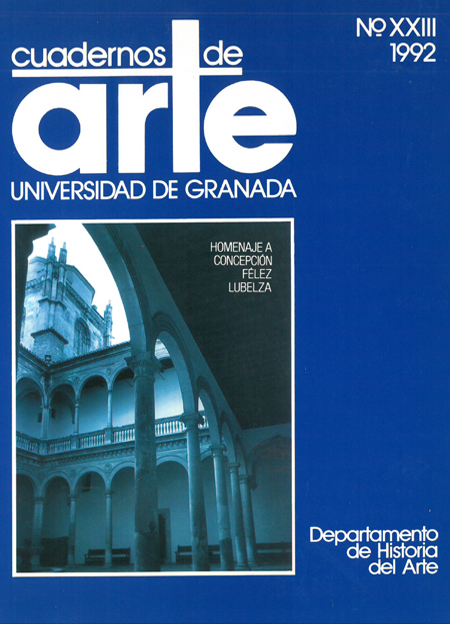Realismo, mitos y símbolos en "Las Hilanderas"
Abstract
The article brings together studies made of the iconography of Velazquez's great work, from the time of its creation. We begin with the title the work received in inventories of the 17th an 18th centuries. Although in 1664 it is called La fábula de Aragne, from 1711 onwards, the tear in which it was incorporated in the royal collections, until 1943 it was interpreted as being a scene of everyday life and was considered to be a great example of Velazquez's realism. However, a suggestion made by Ortega y Gasset and above ali an inconological study by Angulo publishe in 1948 demonstrated that the painting did indeed contain a mythological fable, that originally thougth to be the theme in 1664. Later studies tried to disentangle complex symbols, connectd with those extolling the virtues of the king and the monarchy. We also comment on other studies which emphasized the theatrical nature of the painting, and finally we offer an analysis of the questions raised by the presence of additional materials in the canvas.Downloads
Downloads
Published
1992-11-10
How to Cite
Pita Andrade, J. M. (1992). Realismo, mitos y símbolos en "Las Hilanderas". Cuadernos De Arte De La Universidad De Granada, 245–259. Retrieved from https://revistaseug.ugr.es/index.php/caug/article/view/10924
Issue
Section
Estudios
License
Los autores que publican en esta revista están de acuerdo con los siguientes términos:- Los autores conservan los derechos de autor y garantizan a la revista el derecho de ser la primera publicación del trabajo al igual que ser licenciado bajo una licencia Creative Commons que permite a otros compartir el trabajo con un reconocimiento de la autoría del trabajo y la cita de la fuente original, con un uso no comercial y siempre que no se hagan obras derivadas.
- Los autores pueden establecer por separado acuerdos adicionales para la distribución no exclusiva de la versión de la obra publicada en la revista (por ejemplo, situarlo en un repositorio institucional o publicarlo en un libro), con un reconocimiento de su publicación inicial en esta revista.
- Se permite y se anima a los autores a difundir sus trabajos electrónicamente (por ejemplo, en repositorios institucionales o en su propio sitio web) antes y durante el proceso de envío, ya que puede dar lugar a intercambios productivos, así como a una citación más temprana y mayor de los trabajos publicados (Véase The Effect of Open Access) (en inglés).


 ISSN-e: 2445-4567
ISSN-e: 2445-4567








